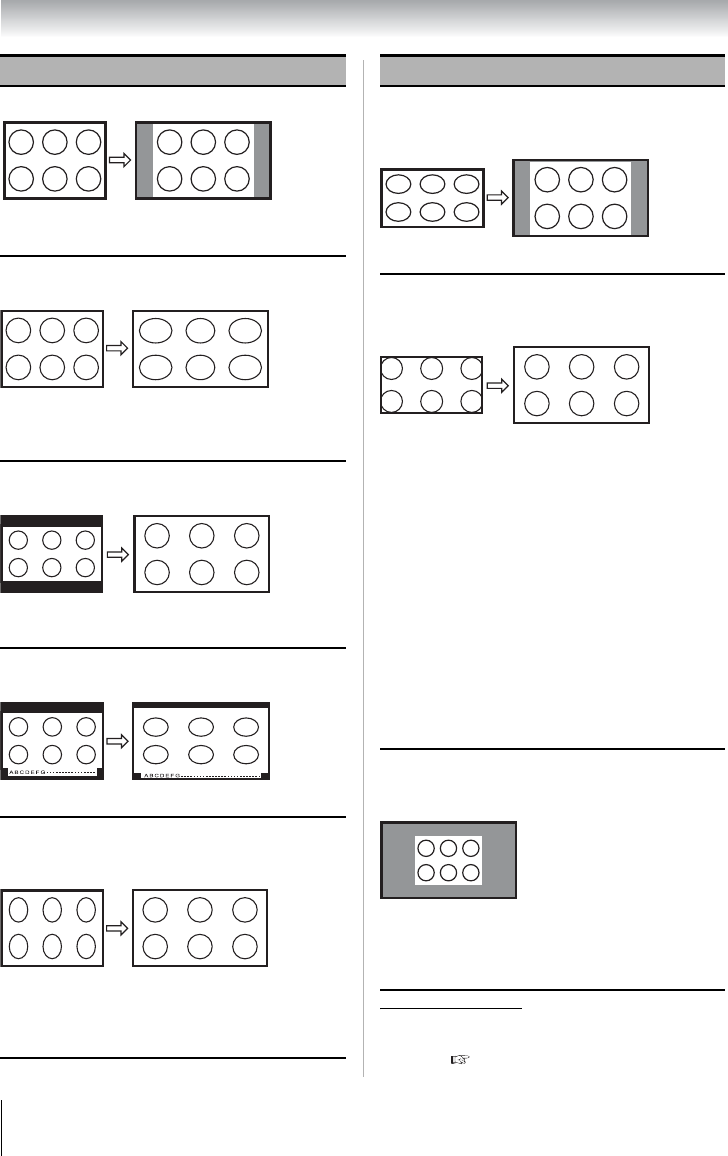
36
Chapter 6: Using the TV’s features
* To view the hidden areas (such as subtitles or
captions), see “Scrolling the TheaterWide
®
picture” ( Page 37).
Picture Size
Natural
Some program formats will display with sidebars
and/or bars at the top and bottom.
TheaterWide 1
(for 4:3 format programs)
The center of the picture remains close to its
original proportion, but the left and right edges are
stretched wider to fill the screen.
TheaterWide 2
(for letter box programs)
The top and bottom edges of the picture may be
hidden
*.
TheaterWide 3
(for letter box programs with subtitles)
The top and bottom edges are hidden
*.
Full
(for 16:9 [480i, 480p] source programs
only)
• If receiving a squeezed 4:3 format program, the
picture is stretched wider to fill the width of the
screen, but not stretched taller.
• None of the picture is hidden.
Picture Size
4:3 HD
(for 720p, 1080i, and 1080p program
sources only)
Picture is not distorted from original size.
Native
(for 480i (HDMI), 480p (HDMI), 720p, 1080i,
and 1080p signal programs)
• If receiving a 480i (HDMI), 480p (HDMI), 720p,
1080i, or 1080p signal program, Native mode
scales the video to display the entire picture
within the borders of the screen (i.e. no
overscanning).
• This is especially useful for external HD sources
such as DVD, DVHS movies, or PC graphics.
Note:
• This mode is supported only for HDMI
(1080p,1080i, 720p, 480p, and 480i),
ColorStream (1080i and 720p), and ANT/
CABLE (digital) inputs (1080p,1080i, and
720p).
• Depending on the input signals, the border
of the picture may be hidden, displayed in
black, or noisy.
Dot by Dot
(for VGA, SVGA, XGA, and WXGA sources
only)
The “Dot by Dot” picture is non-scaling display.
Depending on the input signal formats, picture is
displayed with sidebars and/or bars at the top and
bottom. (Example: VGA input source)


















